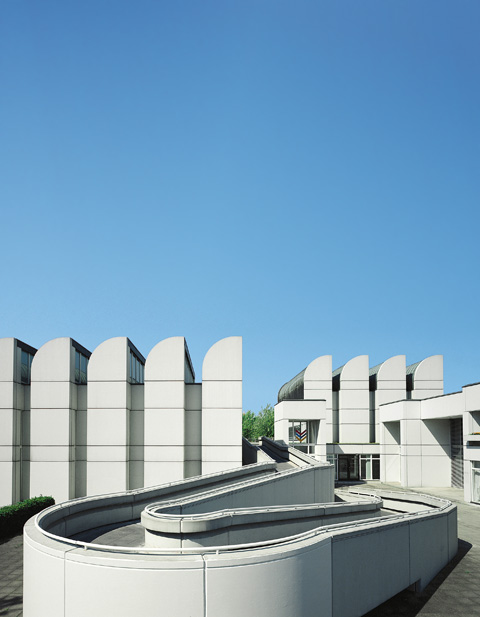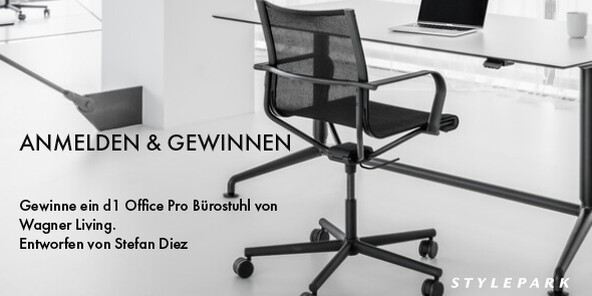The “Bauhaus Travel Book” presents an exciting search for clues that not only takes the reader to the three main Bauhaus locations, Weimar, Dessau and Berlin, but also includes several more or less “foreign” stops along the way: small German villages such as Gelmeroda, to be seen as the subject in many of Lyonel Feininger’s pictures; little towns such as Dornburg on the Saale with its pottery, which once served as an outreach location for the ceramic workshops; or Probstzella, where the Bauhaus workshops created a “Haus des Volkes”. These meticulously-researched links make the travel book an interesting read even for the Bauhaus aficionado and present Bauhaus in all of its multifarious contradictions.
Three longer essays, personal in tone and entertaining to read, provide an extensive introduction to the three periods of Bauhaus and thus make for a good opening to the institution’s checkered history. These lengthy texts are peppered with short quotes and digressions, bringing the past to life and simultaneously supplying the necessary historical context. One example being “…I’m convinced we will succeed if we simply demand what seems impossible.” Walter Gropius’ optimistic words from the birthing years in Weimar. It was not only the misery of the post-1918 period that the Bauhaus masterminds had to overcome; they were also faced with political opposition in the German city of Classicism. After all, with the adjunct “Former Grand-Ducal Saxon United College School of Arts and Crafts” the school’s name still proved extremely long-winded. However, historical photographs of the Van-de-Velde building, still entirely Art Nouveau in style, and the modern re-designs by Herbert Beyer, Oskar Schlemmer und Walter Gropius testify to the success of the radical changes made. And Gropius’ director’s office with its peculiar cubic furniture can still be seen today, albeit in reconstructed form. Another manifestation of the new school and its work, the “Haus am Horn”, was built and furnished as part of a Bauhaus exhibition held in 1923. This austere, angular building with one central room is no longer occupied today and is mostly used for exhibition purposes, and so remains accessible to the public. Each chapter is rounded out by a detailed section on services available, providing a summary of helpful information as well as assistance for planning a trip to the Bauhaus towns, above all regarding the more remote locations on the map.
In the early years in Weimar, Gropius and his artist colleagues Kandinsky, Klee and Feininger worked with characteristic Expressionist zest, proceeding with an approach intended to elicit a synthesis of the arts and crafts. This formed the basis for the common teaching foundations and the experimental study of material and nature. Yet their striving for an artistic synthesis increasingly gave way to a sober orientation toward an industrial approach to design making use of modern technology. Even back in Weimar in 1923, Gropius was revising the teaching concept while Wilhelm Wagenfeld was developing the prototype for his world-famous lamp. But these changes only became apparent when they were thrown out of Weimer in 1925 and subsequently moved to Dessau. Here Bauhaus began to collaborate with the Junkers aircraft factory. New materials such as tubular steel, concrete and glass found their way onto the design scene, ousting wood and ceramic. The Bauhaus building itself also became an architectural manifesto for New Building. Thanks to a rather favorable state government, Gropius and his colleagues were in a position to realize several building projects in the emergent industrial region, including some rather telling examples – namely, an employment office and an estate for low-income families.
Now, most of the buildings have been newly restored as UNESCO World Cultural Heritage sites, furnished with information boards and are often open to the public, too. Visitors can even spend the night in some of them: in the Bauhaus building, in the wing that once housed the student residence with its characteristic balconies, or in one house on the Törten estate. The conditions are however rather Spartan, to say the least. It is with a sprinkle of ironic distance that Ingolf Kern’s chapter on Dessau presents the city with the iconic school building, the unusual Master’s houses and other lesser-known buildings by Bauhaus architects such as Carl Fieger and Richard Paulick. The buildings were ultimately experiments, which can easily fail or simply face rejection from their intended users, a fact the author does not suppress.
The next Bauhaus building, this time in Berlin, clearly illustrates the school’s decline and the changing times. The school was once again closed down by a far-right government. As the last Bauhaus director, Mies van der Rohe tried to make a new start in an old factory building in south Berlin, but this closed too, just short of its one-year anniversary. Bauhaus certainly had many connections to Berlin. Gropius and Mies began their careers here working for Peter Behrens as well as having their own offices here for quite some time. Hannes Meyer, the least known of all the school’s directors, designed the trade union school in Bernau close to Berlin, while in later years several other Bauhaus architects realized large-scale projects in both East and West Berlin. Yet with the Neue Nationalgalerie, the West Berlin Hansa district, Stalinallee, and a series of famous villas and estates, this chapter offers less by way of new discoveries and focuses mainly those we already know.
But a book on Bauhaus, especially one published by three major collections, should also stand up in terms of design. And it certainly does; it boasts a clear layout that arranges the abundance of text blocks in a comprehensible way and juxtaposes the many historical photographs with those from the present day, all of which carry Christoph Petra’s signature. The travel book even fits very nicely in the hand, making it an all-round success. And for those who find hardbacks somewhat old-fashioned, information on the various locations as well as route suggestions are available to download as an app.
Bauhaus Travel Book
Published by Bauhaus-Archiv, Stiftung Bauhaus Dessau, Klassik Stiftung Weimar
Hardback, 304 pages, German, English
Dumont-Buchverlag, Cologne, 2012
19.95 Euros
www.dumont-buchverlag.de
bauhaus-online.de/app
 Bauhaus-Archiv, Museum für Gestaltung in Berlin, with its sawtooth roofs borrowed from industry, designed by Walter Gropius, Alex Cvijanovic and Hans Bandel, photo © ARGE modell bauhaus 2009/ Christoph Petras, 2011
Bauhaus-Archiv, Museum für Gestaltung in Berlin, with its sawtooth roofs borrowed from industry, designed by Walter Gropius, Alex Cvijanovic and Hans Bandel, photo © ARGE modell bauhaus 2009/ Christoph Petras, 2011
 Monument to the March Dead, designed by Walter Gropius, photo © ARGE modell bauhaus 2009/ Christoph Petras, 2011-
Monument to the March Dead, designed by Walter Gropius, photo © ARGE modell bauhaus 2009/ Christoph Petras, 2011-
 Employment office Dessau, designed by Walter Gropius, photo © ARGE modell bauhaus 2009/ Christoph Petras, 2011
Employment office Dessau, designed by Walter Gropius, photo © ARGE modell bauhaus 2009/ Christoph Petras, 2011
 Accompanying app to the Bauhaus Travel Book, photo © ARGE modell bauhaus 2009
Accompanying app to the Bauhaus Travel Book, photo © ARGE modell bauhaus 2009
 Cover of the “Bauhaus Travel Book – Weimar, Dessau, Berlin”, photo © Bauhaus-Archiv Berlin, Stiftung Bauhaus Dessau, Klassik Stiftung Weimar
Cover of the “Bauhaus Travel Book – Weimar, Dessau, Berlin”, photo © Bauhaus-Archiv Berlin, Stiftung Bauhaus Dessau, Klassik Stiftung Weimar
 Cafeteria at the trade union school, designed by Hannes Meyer und Hans Wittwer, photo © ARGE modell bauhaus 2009/ Christoph Petras, 2011
Cafeteria at the trade union school, designed by Hannes Meyer und Hans Wittwer, photo © ARGE modell bauhaus 2009/ Christoph Petras, 2011
 The village church in Gelmeroda is often seen as the subject of Lyonel Feininger’s paintings, photo © ARGE modell bauhaus 2009/ Christoph Petras, 2011
The village church in Gelmeroda is often seen as the subject of Lyonel Feininger’s paintings, photo © ARGE modell bauhaus 2009/ Christoph Petras, 2011
 The Bauhaus-Archiv houses the world’s largest collection on the history of Bauhaus, photo © Bauhaus-Archiv Berlin, Karsten Hintz-
The Bauhaus-Archiv houses the world’s largest collection on the history of Bauhaus, photo © Bauhaus-Archiv Berlin, Karsten Hintz-
 South view of the Bauhaus building in Dessau, photo © Stiftung Bauhaus Dessau/Yvonne Tenschert, 2011
South view of the Bauhaus building in Dessau, photo © Stiftung Bauhaus Dessau/Yvonne Tenschert, 2011
 Cover of the “Bauhaus Travel Book – Weimar, Dessau, Berlin”, photo © Bauhaus-Archiv Berlin, Stiftung Bauhaus Dessau, Klassik Stiftung Weimar
Cover of the “Bauhaus Travel Book – Weimar, Dessau, Berlin”, photo © Bauhaus-Archiv Berlin, Stiftung Bauhaus Dessau, Klassik Stiftung Weimar
 Exterior view of the Bauhaus Museum in Weimar, photo © Klassik Stiftung Weimar/Jens Hauspurg
Exterior view of the Bauhaus Museum in Weimar, photo © Klassik Stiftung Weimar/Jens Hauspurg







